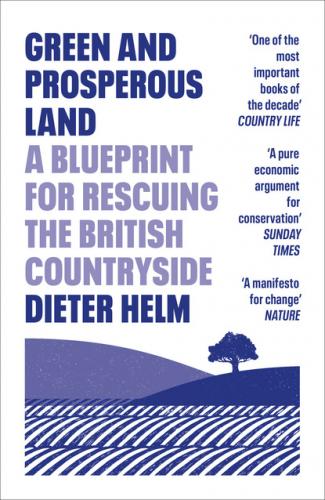Introduction: Our natural capital inheritance
PART ONE: The Prize and the Risks
Chapter two: Business-as-usual
PART TWO: Building a Greener Economy
Chapter three: Restoring rivers
Chapter four: Green agriculture
Chapter seven: Nature in the towns and cities
PART THREE: Principles, Paying and the Plan
Chapter nine: Paying for pollution
Chapter ten: Natural capital markets, auctions and the net zero example
Conclusions: Securing the prize
I have been thinking about the issues in this book for a long time. I grew up on the Essex marshes, and spent long hours around the sea walls and creeks of my grandfather’s farm. It is the place of my memories, and places are how we remember nature. It was a small farm by modern standards, around 350 acres. It was a mixed dairy and arable farm, with the traditional farmyard chickens and ducks, a big vegetable garden, a small orchard and of course beehives. It had a patchwork of more than a dozen fields, butting up to the sea wall.
In spring there were flocks of lapwing nesting so densely that it was difficult to avoid treading on the eggs. There were lots of skylarks and the full range of farmland birds, and of course a stand of great elms. House sparrows literally swarmed in the farmyard, which was often dense with flies and therefore swallows and house martins. There were barn owls. In winter, the marshes came alive with wildfowl. There were flocks of brent geese, teal and widgeon. So great were the numbers that books were written about wildfowling and punt guns and all the paraphernalia of Essex marsh life.[1]
Psychologists will tell you that what happens in that magic time of childhood forms the subsequent person. It is why getting children and nature together is so vital for the future of the environment. It is hard to put into a person’s mind what they never had in childhood. In my case, although most of my career has been spent in mainstream economics in Oxford, the experiences of those early years have never left me. It is one of the reasons why, in 2012 when I was given the opportunity to chair the Natural Capital Committee (NCC), I grabbed it.
By that time an enormous amount of damage had been done to the natural environment. After World War II, British agricultural policy, and then the Common Agricultural Policy (CAP), had transformed the land, polluting as it went. My grandfather’s farm was sold and turned into one large field in the 1960s, with the hedgerows literally dynamited and mole drainage applied. That put an end to the lapwings, and most of the skylarks too. ‘Progress’ had arrived.
What happened to that farm was but a microcosm of what was happening everywhere at an accelerating rate from the 1960s. Alongside the intensification of agriculture, industrial development, housing and roads bisected the landscape and left fragments of nature in between. Population growth brought with it increasing consumption, and some of this has proved highly damaging. Prosperity came, built on a fossil fuel economy, bringing with it pesticides, plastics and petrochemicals.
The consumer boom drove a wedge between nature and people, and in a highly urbanised society fewer and fewer people experienced nature and, not surprisingly, cared less and less about it, except perhaps the bits they saw on television. There were exceptions and conservation successes, but the trend was abundantly clear. My grandfather’s farm, with all its biodiversity and wonder, would now be regarded by most people as something that might appear in the fiction of H. E. Bates’s The Darling Buds of May, or a nature reserve – an ‘uneconomic’ yet quaint relic of a more primitive time.
Many environmentalists had reached a point of despair by 2011 when the coalition government published its White Paper, ‘The Natural Choice’.[2] The National Infrastructure Plan, the house-building targets, and the overwhelming emphasis on coping with the fallout from the financial crisis of 2007/08 set other priorities, with nature very low down the pecking order. A quick read of the 2011 White Paper confirms this: it is largely without content. With little to actually contribute to turning the tide on environmental damage, it took the classic Yes Minister approach: it set up a committee to think about it. This was the origin of the NCC.
Why, then, take on the chair of the NCC, apart from sentiment? Why try to work on the inside rather than protest on the outside? Or simply give up? There are several reasons. The past approaches have not worked, despite occasional Pyrrhic victories, and hence the NCC could hardly make matters worse. But the main reason was that I was optimistic that the NCC could really make a difference. For all the vacuity of the 2011 White Paper, there were two elements that could be built on: the clear aim to integrate the environment into the heart of the
